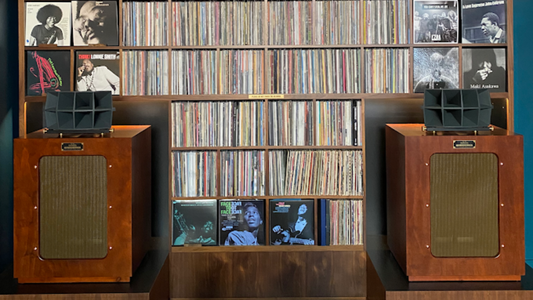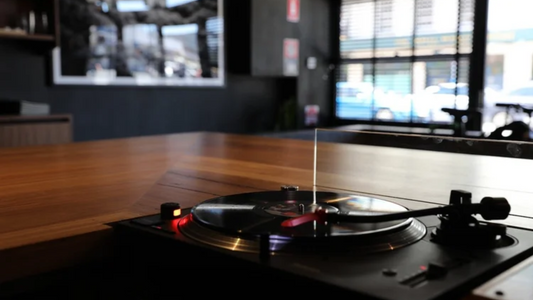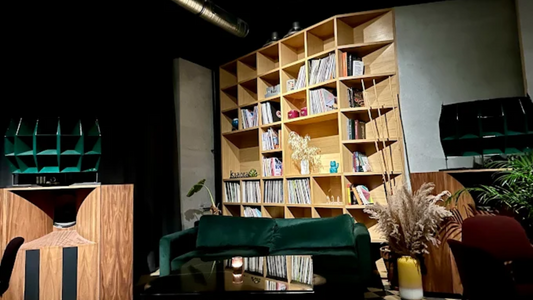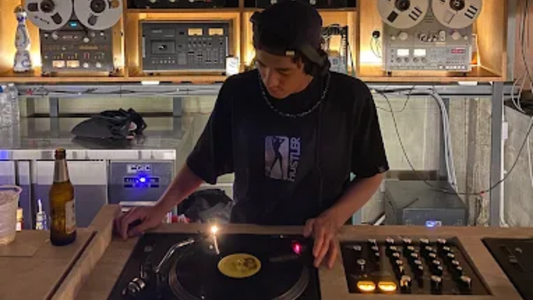
The Ritual of the Needle Drop: Why Vinyl Still Defines the Listening Bar
By Rafi Mercer
There’s a moment in every listening bar that feels almost sacred. The room waits. A hand hovers above the turntable. The stylus lowers, a faint crackle emerges, and then, the first note lands. It is the ritual of the needle drop, and it still defines why these spaces matter.
In an era when music is infinite and instant, that pause, that delay, is what resets everything. It reminds us that sound is an event, not a background. A record does not simply start, it arrives. The needle drop is both invitation and command. To pay attention, to be still, to listen.
Walk into Bar Martha in Tokyo or Spiritland in London, and you’ll see it enacted over and over. The system is immaculate, the records curated, the whisky poured with precision. Yet all of it pivots on that single gesture. The lowering of the arm, the settling of stylus into groove. It is a choreography of patience, a slowing of time.
Why does vinyl retain this power when digital can offer perfect sound on demand? Partly it’s physical. A record has weight, scale, fragility. You hold it, inspect it, respect it. The cover art is not thumbnail but canvas. Even the imperfections matter: the slight hiss, the way a well-loved pressing carries the history of every play before.
But more than that, vinyl creates commitment. You don’t skip casually. You don’t half-listen. A record asks you to inhabit its space for 20 minutes a side, to take in the album as a shape rather than fragments. In a listening bar, that translates into communal listening. A roomful of people surrendering to the same arc of sound, without interruption.
The needle drop is also architectural. It redefines the space. The silence before becomes charged, anticipatory. The room rearranges itself around the record’s first notes. In those seconds, you feel why sound systems matter: how a pair of JBL monitors, Klipsch horns, or vintage Tannoys doesn’t just reproduce music but builds a stage in the air.
At home, you can recreate this ritual without needing a wall of vinyl or a rare sound system. Begin by setting intention. Switch off distractions. Handle the record with care, as though it were art. Lower the stylus with precision. And then, sit still for the first notes. You’ll feel how it transforms the listening, how it gives even a familiar album new gravity.
Consider pairing the ritual with something tangible: a pour of whisky, the strike of a match, a slow breath. These gestures turn listening into ceremony. A dram of Yamazaki 12, with its honeyed patience, sits beautifully beside a first pressing of Miles Davis’ Kind of Blue. A glass of Nikka From the Barrel alongside Coltrane’s A Love Supreme sharpens both whisky and sound. The needle drop becomes a hinge between two rituals. Listening and tasting.
Cinema has recognised this too. Think of the slow pan to a turntable in films where music isn’t just soundtrack but story. Directors know that watching someone lower a needle conveys intent. This isn’t background noise, it’s the centre of the moment. The act itself carries narrative weight.
In a sense, the needle drop is the listening bar’s equivalent of candlelight in a restaurant. It signals that what follows is not casual. It asks you to lean in, to share silence, to attend. It’s an old technology that has become a modern luxury. To listen deliberately.
Perhaps that’s why vinyl sales keep rising, why new listening bars keep opening, why the culture grows rather than fades. Because in a world where everything is available instantly, the slow, deliberate drop of a stylus feels rare, almost radical. It turns sound back into event.
The next time you step into a listening bar, or build your own ritual at home, notice the silence before the first note. Savour the crackle. Feel the weight of the gesture. The music matters, of course. But so does the way it begins.
Rafi Mercer writes about the spaces where music matters. For more stories from Tracks & Tales, subscribe here, or click here to read more.






